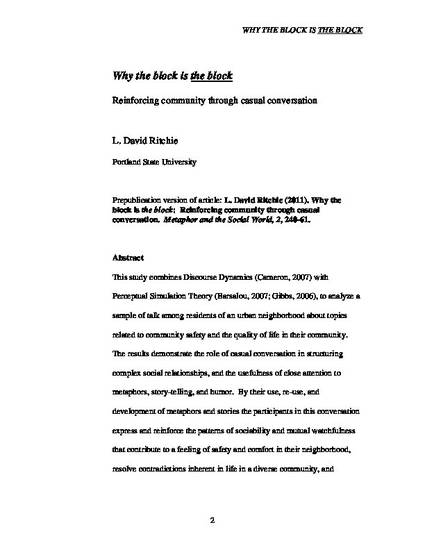
- Language and communication,
- Quality of life,
- Cognition and language
This study combines Discourse Dynamics (Cameron, 2007) with Perceptual Simulation Theory (Barsalou, 2007; Gibbs, 2006), to analyze a sample of talk among residents of an urban neighborhood about topics related to community safety and the quality of life in their community. The results demonstrate the role of casual conversation in structuring complex social relationships, and the usefulness of close attention to metaphors, story-telling, and humor. By their use, re-use, and development of metaphors and stories the participants in this conversation express and reinforce the patterns of sociability and mutual watchfulness that contribute to a feeling of safety and comfort in their neighborhood, resolve contradictions inherent in life in a diverse community, and cultivate mutual commitment to maintaining the neighborhood as a pleasant community in which to live and raise children.
© 2011 John Benjamins Publishing Company

NOTICE: this is the author’s version of a work that was accepted for publication in Metaphor and the Social World. Changes resulting from the publishing process, such as peer review, editing, corrections, structural formatting, and other quality control mechanisms may not be reflected in this document. Changes may have been made to this work since it was submitted for publication. A definitive version was subsequently published in Metaphor and the Social World, Volume 1, Issue 2, Jan 2011, p. 239 - 260.